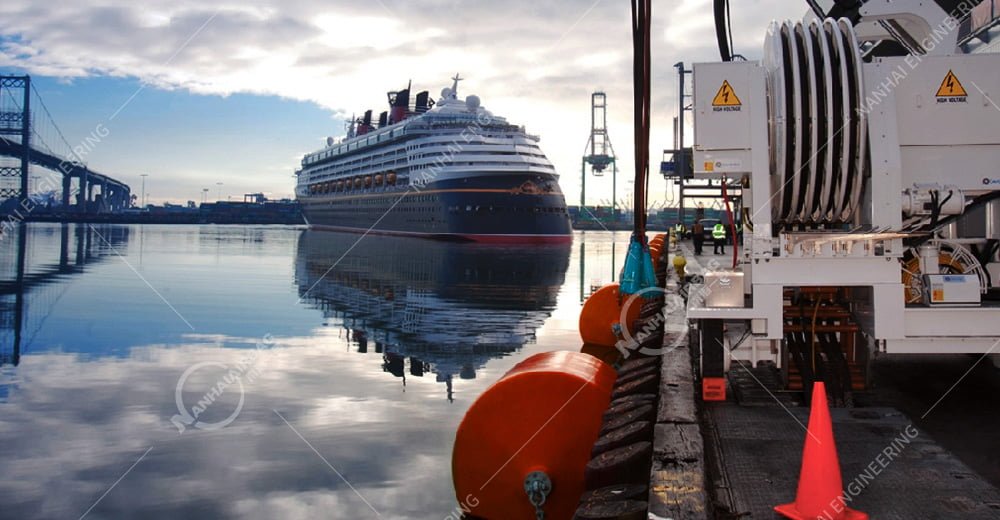How much does a pneumatic fender weigh?
04/29/2025What is a fender system?
04/30/2025What Is a Foam Fender?
If you own a boat, run a marina, or are involved in the shipping industry, protecting your vessels should be at the top of your list. Collisions with docks, other boats, or even rough waves can lead to some serious and costly damage. That’s where foam fenders come in—they’re a straightforward yet incredibly effective way to keep your vessels safe and sound while you’re out on the water.
So, why is this something you should think about right now? Just imagine your beautiful yacht scraping against a concrete dock because your fender wasn’t up to the task. Or picture a cargo ship getting damaged while trying to dock, resulting in expensive delays. Thankfully, these scenarios can be avoided with the right marine fender system. Let’s dive into the world of foam boat fenders—how they function, why they’re so important, and how they stack up against other options.
What is a foam fender?
Foam filled fenders are among the most popular floating rubber fender systems available today. They’re often used on yachts, ships, and piers, where they’re secured with ropes or straps. A foam fender is made up of a closed-cell foam core, a polyurethane skin, various fixings, filament reinforcement, and internal chains. (Busy major ports often opt for tire nets to extend their lifespan.)

01: closed-cell foam core
02: filament reinforcement
03: polyurethane skin
04: internal chains
05: truck tyre net or aircraft tyre net
Why are foam fenders important?
These fenders prevent costly damage to vessels and docks by absorbing shock during berthing, mooring, or accidental impacts. Unlike traditional rubber fenders, foam versions are lighter, easier to install, and need minimal maintenance.
Why Choose NANHAI Foam Fenders Over Other Types?
Marine fenders come in a variety of materials, but foam really shines for a few key reasons:
Never Loses Buoyancy – Unlike air-filled fenders that can go flat, foam keeps on floating even if it gets damaged.
Saves Time and Money – You won’t need to worry about reinflating or frequently replacing them.
Withstands Harsh Conditions – Top-notch foam can handle sun damage, saltwater corrosion, and extreme temperatures like a champ.
Fits Any Vessel – They come in cylindrical, square, and even custom shapes, perfect for everything from small boats to huge ship fenders.
Scientific and technological innovation – A new type of spraying polyurethane (polyurea) technology has been invented by NANHAI to make the surface of the foam filled fender anti-corrosive and scratch-resistant.
Foam fender delivers long-term reliability. If you’re fed up with the never-ending hassle of tweaking or swapping out worn fenders, foam filled fender is your go-to for lasting reliability.
performance of foam fender
The parameters for NANHAI Foam Filled Fenders range from diameters of 500 mm to 4,500 mm and lengths from 800 mm to 10,600 mm. Depending on the specific use and application, these fenders can be set up with either a two-point or four-point mounting system. The standard colors for these floating foam filled fenders are black and orange, but if our customers have special requests, we’re more than happy to provide personalized color options.
The incorporation of memory foams in the fender core, known for their impressive compressive strengths, allows for significant energy absorption during marine operations. This feature is further enhanced by the low reaction forces, which simplify berthing procedures, particularly in challenging conditions. Additionally, users can rest easy knowing that the closed cell structure of these foams makes the fenders nearly unsinkable, ensuring they continue to operate effectively even if they sustain damage beyond repair.

People Also Ask
What materials are marine fenders made of?
Common options include rubber, foam, or plastic, with foam fenders typically using PE or EVA for durability.
How do I install foam fenders on my boat?
You can mount them with ropes, straps, or specialized brackets, depending on your vessel and docking setup.
Foam vs. rubber fenders: Which is better?
Foam offers lightweight convenience and low maintenance, while rubber provides higher impact resistance at the cost of more upkeep.
Can large ships use foam fenders?
Absolutely. Heavy-duty foam fenders are designed for cargo ships, ferries, and offshore platforms.
Is a Foam Fender Right for You?
Foam fenders deliver durability, ease of use, and cost savings, making them a top choice for recreational boaters and commercial operators alike.
Ask yourself:
- Does your marina handle heavy vessel traffic?
- Are you looking for a low-maintenance alternative to inflatable fenders?
If you answered yes, foam fenders could be your ideal solution. Your vessel—and budget—will benefit from the upgrade.
